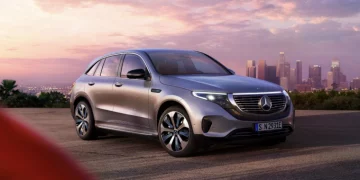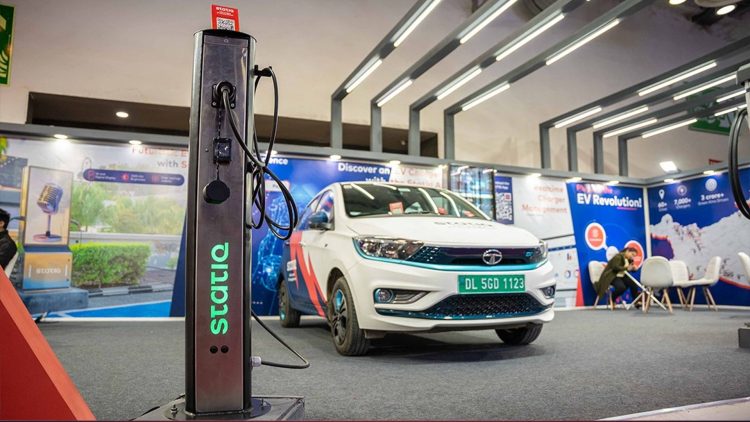Introduction: The Growing Need for EV Charging Solutions
As the electric vehicle (EV) market continues to expand at a rapid pace, the demand for robust, accessible, and efficient charging infrastructure has never been greater. EV adoption is heavily influenced by the availability and convenience of charging stations, and innovations in charging infrastructure are critical to accelerating the transition to a more sustainable transportation system. From ultra-fast charging stations to home charging solutions, the charging infrastructure landscape is undergoing a major transformation, one that promises to reduce barriers to EV ownership, shorten charging times, and improve user experience.
This article will explore the latest developments in EV charging infrastructure, from advancements in charging speed to the integration of new technologies that aim to provide efficient, seamless, and sustainable solutions for electric vehicle owners. We will discuss the key drivers behind the growth of charging infrastructure, challenges faced by industry stakeholders, and how these innovations are shaping the future of electric mobility.
The Importance of Charging Infrastructure for EV Adoption
The availability of EV charging infrastructure is one of the most significant factors influencing consumer decisions to adopt electric vehicles. Despite the advantages of electric vehicles—such as lower operating costs, environmental benefits, and reduced dependence on fossil fuels—range anxiety and the perceived inconvenience of finding charging stations have historically hindered widespread EV adoption. According to recent studies, one of the top concerns for potential EV buyers is the availability of public charging stations, particularly in rural or underserved areas.
To address these concerns, industry stakeholders, including automakers, utilities, governments, and technology providers, are investing heavily in the development of advanced charging solutions. As a result, the EV charging infrastructure ecosystem is evolving rapidly, with innovations aimed at making charging more accessible, faster, and more convenient.
Ultra-Fast Charging Stations: A Game-Changer for EV Owners
One of the most significant recent innovations in EV charging infrastructure is the development of ultra-fast charging stations. Ultra-fast chargers—also known as Level 3 or DC fast chargers—are capable of delivering much higher charging power compared to traditional Level 1 or Level 2 chargers. These chargers can replenish an EV’s battery much faster, reducing charging times from several hours to as little as 20–30 minutes, depending on the vehicle and charger specifications.
1. Charging Speed and Power Levels
The key advantage of ultra-fast charging stations is their ability to significantly reduce charging times. While Level 1 chargers, which are typically used for home charging, can take up to 12-24 hours to fully charge a vehicle, and Level 2 chargers usually take 4-6 hours, ultra-fast chargers can recharge an EV’s battery to 80% in as little as 20-30 minutes. This makes long-distance travel more feasible for EV owners, addressing one of the major barriers to EV adoption: range anxiety.
Ultra-fast chargers operate at power levels of 150 kW to 350 kW or higher, which is much faster than traditional chargers. These chargers are capable of delivering high current directly to the vehicle’s battery, using direct current (DC) rather than alternating current (AC), allowing for faster energy transfer.
2. Impact on Long-Distance Travel and Convenience
The advent of ultra-fast charging stations has transformed long-distance travel for electric vehicles. With faster charging times, EV owners no longer need to worry about spending hours at charging stations when driving across the country. Companies like Tesla, Electrify America, and Ionity are leading the charge in building extensive ultra-fast charging networks along major highways and travel corridors, making long trips more convenient.
As the network of ultra-fast chargers expands, EV owners can travel further with fewer stops, leading to greater confidence in using electric vehicles for daily commuting and long-haul trips. Additionally, with the development of high-speed charging infrastructure in key areas such as shopping centers, highway rest stops, and gas stations, drivers can take advantage of charging stations located in easily accessible locations.
Home Charging Solutions: Convenience at Your Doorstep
For many electric vehicle owners, home charging is the most convenient option. The ability to charge an EV overnight while parked in a garage or driveway eliminates the need to visit public charging stations frequently. However, home charging infrastructure is not without its challenges, particularly when it comes to power requirements, installation costs, and compatibility with various vehicle models.
1. Level 1 and Level 2 Home Charging
Level 1 home chargers are the most basic and widely available solution for charging electric vehicles. These chargers plug directly into a standard 120V household outlet and are easy to install, making them ideal for casual EV owners who don’t need fast charging speeds. However, Level 1 chargers are slow, typically taking 12 to 24 hours to fully charge a battery, depending on the vehicle’s capacity.
Level 2 home chargers are more powerful and faster, operating at 240V and reducing charging time significantly. A Level 2 charger can fully charge an EV in 4 to 6 hours, which is suitable for daily charging needs. The installation of Level 2 chargers requires an electrician to install a dedicated circuit, and this process can incur additional costs.
2. Smart Charging and Connectivity
Recent advancements in home charging solutions have focused on integrating smart charging technology, allowing EV owners to control and monitor their charging sessions remotely via smartphone apps. Smart chargers can optimize charging schedules based on electricity pricing, enabling users to take advantage of off-peak rates and reduce energy costs. Additionally, some smart charging systems can integrate with home solar panels, allowing homeowners to use renewable energy to charge their vehicles, further reducing their environmental footprint.
3. Workplace Charging Solutions
In addition to home charging, workplace charging has emerged as a key solution for many EV owners. Employers are increasingly installing EV chargers in office parking lots to offer employees the ability to charge their vehicles during work hours. Workplace charging reduces the need for employees to rely on public charging stations and ensures that their EVs are fully charged by the time they leave for home. Additionally, workplace charging can support the transition to electric fleets for businesses, further encouraging EV adoption.

Wireless Charging: The Future of Charging Convenience?
Wireless charging, or inductive charging, is another innovative development in the EV charging space. Wireless charging technology uses electromagnetic fields to transfer energy between a charging pad on the ground and a receiver coil in the EV, eliminating the need for physical connectors. While wireless charging is still in the experimental phase for most EVs, several automakers and tech companies are actively working on bringing this technology to market.
1. The Convenience of Wireless Charging
The primary advantage of wireless charging is convenience. With no cables to plug in, drivers simply park their vehicle over the charging pad, and the vehicle begins charging automatically. This makes the process simpler and faster, especially in situations where plugging in the charger is difficult, such as at night or in poorly lit areas. Furthermore, wireless charging could be integrated into public spaces, allowing for seamless charging experiences without the need for dedicated charging stations.
2. Charging on the Go: Dynamic Charging
In addition to static wireless charging, there is also potential for dynamic wireless charging, where vehicles can charge while in motion. This would involve embedding wireless charging pads along highways or streets, allowing EVs to charge while driving. While this technology is still in the early stages of development, dynamic wireless charging could eliminate the need for charging stops altogether, significantly extending the driving range of electric vehicles.
Global Charging Networks: Expanding Access and Connectivity
To support the growing number of electric vehicles on the road, charging networks are expanding rapidly around the world. Global players like Tesla, ChargePoint, Shell, and BP are investing billions of dollars into building large-scale charging networks that span urban areas, highways, and remote locations. These networks aim to create a seamless and accessible charging experience for EV owners, regardless of where they are located.
1. Interoperability and Standardization
One of the key challenges to global charging networks is ensuring interoperability between different EV models and charging stations. As the industry grows, standardization is critical to ensuring that all electric vehicles can use public charging stations. Efforts are underway to standardize charging connectors and communication protocols, such as the Combined Charging System (CCS) and the Tesla Supercharger network, to ensure compatibility between charging stations and vehicles.
2. Charging Access for All
As the market for electric vehicles expands, there is an increasing focus on making charging infrastructure accessible to all, including people who do not have access to home charging solutions. Public charging stations are being installed in high-traffic areas such as shopping malls, hotels, parking garages, and public buildings. Additionally, mobile apps are being developed to help drivers locate available charging stations and monitor the status of chargers in real-time.
The Role of Government Policies and Incentives
Government policies and incentives are key drivers behind the expansion of EV charging infrastructure. Many countries, including the United States, the European Union, and China, have introduced financial incentives and subsidies to encourage the installation of public charging stations. Governments are also implementing stricter emissions standards and regulations, which are pushing automakers and charging infrastructure providers to invest more heavily in EV charging solutions.
1. Financial Incentives for Charging Infrastructure
Governments around the world are offering grants, tax incentives, and low-interest loans to support the deployment of EV charging infrastructure. These policies aim to reduce the financial burden on businesses and consumers and accelerate the transition to electric mobility.
2. Public-Private Partnerships
Public-private partnerships are also playing a critical role in expanding EV charging infrastructure. Governments are collaborating with private companies to deploy large-scale charging networks and offer incentives to both consumers and businesses. These partnerships have the potential to make EV charging more widespread and accessible to a broader population.
Conclusion: A Brighter Future for EV Charging
The latest innovations in EV charging infrastructure are transforming the way we think about electric vehicle ownership. With ultra-fast chargers, wireless charging technology, and growing global charging networks, the barriers to EV adoption are rapidly diminishing. As the infrastructure continues to improve and expand, electric vehicles will become an increasingly attractive option for consumers worldwide. Ultimately, these advancements will play a pivotal role in shaping the future of transportation and accelerating the transition to a more sustainable and environmentally friendly mobility system.











































